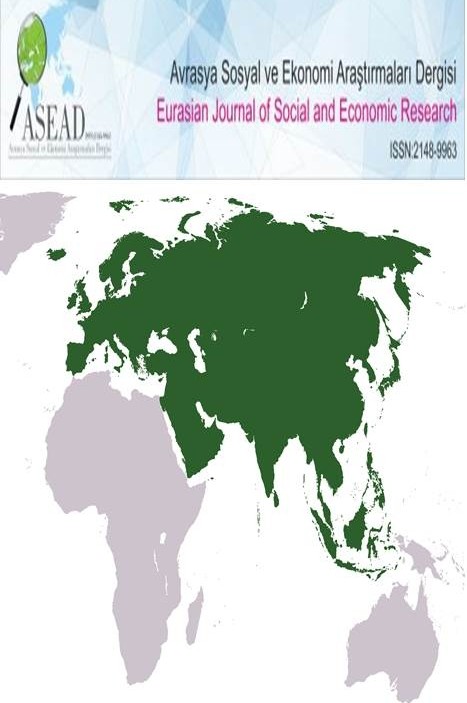İŞYERLERİNDE MOBBİNG BENZERİ PARAKRİMİNAL DAVRANIŞLARIN ÖNLENMESİ İÇİN ÖNERİLEN BİR PSİKOEĞİTİM MODELİ
Mobbing, Parakriminal Davranış, İşyeri Suçu, Adli Psikoloji
___
- Andersson L, Pearson C (1999) Tit for tat? The spiraling effect of incivility in the workplace. Academy of Management Review 24(3), 452-471. Bartlett, M.E. (2009). Workplace incivility and conflict management styles of community college leaders in the nine mega states (Doctoral Thesis). Clemson University. Bartlett, J.E. & Bartlett, M.E. (2011). ‘Workplace bullying: an integrative literature review’. Advances in Developing Human Resources, 13(1), 69-84. Bilsky, W., & Schwartz, S. H. (1994). Values and personality. European Journal of Personality, 8, 163-181. Bodeker, W., & Friedrichs, M. (2011). Kosten der psychischen Erkrankungen und Belastungen in Deutschland, In Lothar Kamp (Ed.), Regelungslücke psychische Belastungen schliesse (pp. 69-102). Dusseldorf: Hans Bockler Stiftung. Bouman, T., Steg, L., & Kiers, H.A.L. (2018). Measuring Values in Environmental Research: A Test of an Environmental Portrait Value Questionnaire. Frontiers in Psychology, 9(564), 1-15. doi: 10.3389/fpsyg.2018.00564 Brun, E., & Milczarek, M. (2007). Expert forecast on emerging psychosocial risks related to occupational safety and health. European Agency for Safety and Health at Work. (GENERIC). Davenport, N., Schwartz, R.D., & Elliott, G.P. (2002). Mobbing: Emotional abuse in the American workplace (2nd ed.). Ames, IA: Civil Society Publishing. De Groot, J. I. M., & Steg, L. (2007). Values, beliefs and environmental behavior: Validation of an instrument to measure egoistic, altruistic and biospheric value orientations in five countries. Journal of Cross-Cultural Psychology, 38, 318–332. Feist, J. & Feist, G. (2009). Theories of Personality, (Seventh Edition). New York: McGraw- Hill. Fox, S. & Freeman, A.M. (2011). ‘Narcissism and the deviant citizen: a common thread in CWB and OCB’, in P. Perrewe and D. Ganster (eds), Research in Occupational Stress and Well-Being, Bingley: Emerald Group Publishing. Fox, S. (2015). Revision of the workplace bullying checklist: the importance of human resource management’s role in defining and addressing workplace bullying. Human Resource Management Journal, 25(1), 116-130. doi: 10.1111/1748-8583.12049 Glendinning, P. M. (2001). Workplace bullying: Curing the cancer of the American workplace. Public Personnel Management, 30, 269-286. Giga S, Hoel H, Lewis D (2008). The costs of workplace bullying: a report and review for the dignity at work partnership: A partnership project funded jointly by Unite and the Department for Business, Enterprise and Regulatory Reform. University of Manchester. Hassard, J., Teoh, K., Cox, T., Dewe, P., Cosmar, M., Gründler, R., Flemming, D., Cosemans, B. & Van den Broek, K. (2014). Calculating the cost of work-related stress and psychosocial risks. European Risk Observatory. Luxembourg: Publications Office of the European Union. Kielhofner G (1992) Conceptual Foundations of Occupational Therapy. Philadelphia, FA Davis. Mayer, F. S., & Frantz, C. M. (2004). The connectedness to nature scale: A measure of individuals’ feeling in community with nature. Journal of Environmental Psychology, 24, 503–515. doi:10.1016/j.jenvp.2004.10.001. McAvoy B., & Murtagh J. (2003). Workplace bullying the silent epidemic. British Medical Journal, 326, 776-777. Namie, G. (2003). Workplace bullying: Escalated incivility. Ivey Business Journal: Improving the Practice of Management. November/December, 1-6. Nisbet, E. K. L., Zelenski, J. M., & Murphy, S. A. (2009). The nature relatedness scale: Linking individuals’ connection with nature to environmental concern and behavior. Environment and Behavior, 41, 715–740. doi:10.1177/0013916508318748. O’Donohue, W.T., & Fischer, J.E. (2012). Cognitive Behavior Therapy: Core principles for practice. New York: Wiley. Pearson, C., & Porath, C. (2009). The cost of bad behavior: How incivility is damaging your business and what to do about it. New York, NY: Penguin Books. Rodgers, W., Gago S. (2006). Improving Social Corporate Responsibility: the Case of Bullying Behavior. Working Paper 06-42, Business Economics Series 13 Saunders, P., Huynh, A., & Goodman-Delahunty, J. (2007). Defining workplace bullying behaviour: Professional lay definitions of workplace bullying. International Journal Law of Psychiatry, 30, 340-354. Schultz, P., Shriver, C., Tabanico, J., & Khazian, A. (2004). Implicit connections with nature. Journal of Environmental Psychology, 24, 31–42. doi:10.1016/S0272-4944(03)00022-7. Sloan, L., Matyok, T., Schmitz, C. L., & Short, G. (2010). A story to tell: The cost of bullying and mobbing in the workplace. International Journal of Business and Social Science, 1(3), 87-96. Vaske, J. J. & Donnely, M. P. (1999). A value–attitude–behavior model predicting wildland preservation voting intentions. Society and Natural Resources, 12, 523–537, with permission of Taylor & Francis Ltd (http://www.tandfonline.com). Zapf, D., Escartin, J., Einarsen, S., Hoel, H. & Vartia, M. (2011). Empirical findings on prevalence and risk groups of bullying in the workplace. In S. Einarsen., H. Hoel., D. Zapf, & C. Cooper, (Eds), Bullying and Harassment in the Workplace: Developments in Theory, Research, and Practice (pp. 75-106), 2nd Edn. Boca Raton, FL: CRC Press,
- Yayın Aralığı: Yılda 4 Sayı
- Başlangıç: 2014
- Yayıncı: İrfan TÜRKOĞLU
GENÇ VE YETİŞKİNLERDE DUYGUSAL ZEKÂ ve MUTLULUK DÜZEYİNİN BAZI DEĞİŞKENLERE GÖRE İNCELENMESİ
IMPACT OF AI SYSTEMS ON MANAGERIAL DECISION-MAKING PROCESS
THE RELATIONSHIP BETWEEN CONSUMER CREDIT AND CONSUMER CONFIDENCE INDEX
Ayhan KAPUSUZOĞLU, Nildağ BAŞAK CEYLAN, Ayyüce MEMİŞ
KAZIMKARABEKİR İLÇESİ KASABA TAŞ EVLERİ, KARAMAN
KÜLTÜRLERARASI İLETİŞİM: KAZAKİSTAN’DA ÇOK DİLLİLİK SORUNLARI
KAMU HASTANELERİNDE VERİMLİLİK ÖLÇÜMÜ: AKDENİZ BÖLGESİ ÖRNEĞİ
